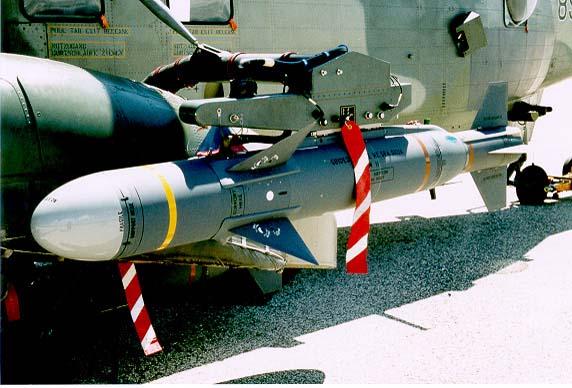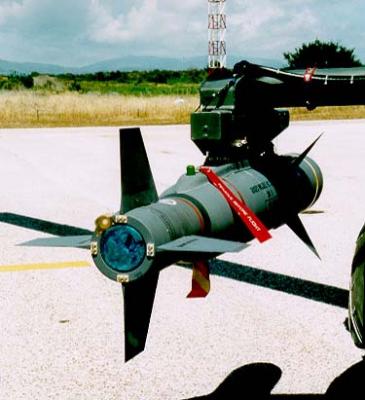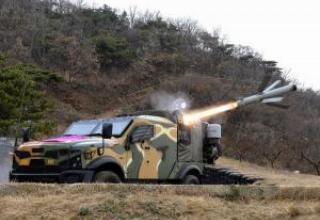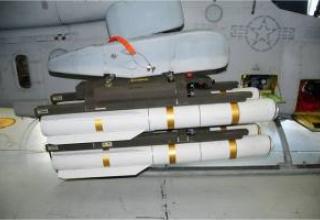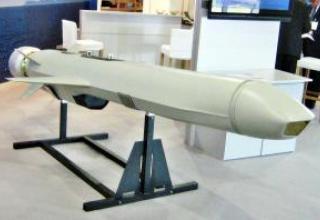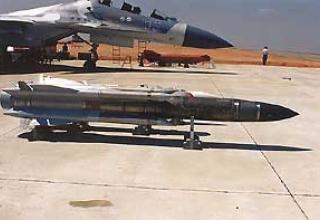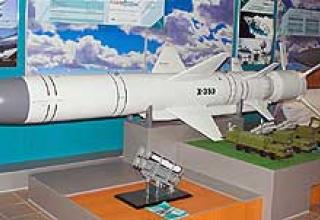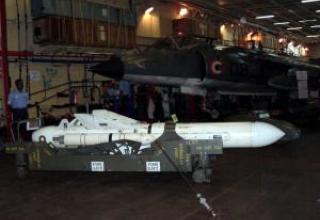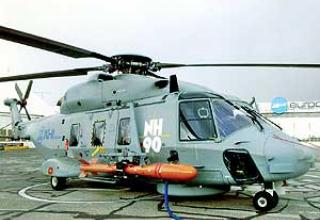In 1981, the British naval deck helicopters were adopted anti-ship missile "Sea Skua". This significantly increased the firepower of British Navy ships - from helicopter carriers to frigates.
The missile was developed by British Aerospace Defence.
It is currently in service with the naval forces of Brazil, Germany, Korea, Turkey, India and other countries. Carriers of the rocket, along with helicopters "Lynx" are helicopters "Sea King".
Composition:
Sea Skua" rocket (see the scheme) is made according to the aerodynamic scheme "swivel wing". Its aerodynamics is designed to fly at low supersonic and high subsonic speeds. The hull consists of two compartments of different diameters connected by a transition cone. The front compartment has triangular-shaped cross-shaped nose rudders. There is a fixed cruciform stabilizer in the tail section. The propulsion system consists of a march and a solid propellant launch engine that are launched simultaneously a few seconds after the missile is reset.
The radar homing head of the missile operates in conjunction with the helicopter radar "Sea Spray" (frequency range 8-10 GHz), which has high power radiation and frequency scanning. High resolution of the radar is provided by the scheme of reduction of reflected signal fluctuations at illumination of a surface target. This creates conditions for the engagement of small surface targets in all weather conditions, even in the presence of intense active interference and interference from the sea surface.
When a target is detected, the radar switches to tracking and backlighting mode. The missiles can be launched individually or in volleys. Before the launch the pilot can enter one of the possible flight altitudes into the onboard equipment (depending on the sea state). Rolling gyroscopes, switching on thermobatteries and setting the homing head are carried out within two seconds between pressing the start button and the descent of the rocket from the launcher. The flight height is controlled by a radio altimeter.
After the launch, the missile is reduced to an extremely low altitude of 2-5 m and moves to the marching section of the flight (see the trajectory diagram). The homing head captures the signals of the illuminated radar reflected from the target and carries out homing.
In case the Homing Head does not capture the target on the flight path, a pitch manoeuvre is provided at the end of the trajectory. During the maneuver, which is programmed or performed on command, the flight height is increased, which provides better conditions for the capture of signals reflected from the target, and begins homing on the object of impact.
When hit by an attacking ship, a delayed contact fuse is triggered. A non-contact fuse is used to destroy deck superstructures, acting on command of a radio altimeter.
Characteristics:
| Flight range, km | 3-15 (reportedly under 20 ) |
| Missiles flight speed | 0,8—0,95М |
| The length of the rocket, mm | 2850 |
| The diameter of the rocket body, mm | 220-270 |
| Wingspan, mm | 600 |
| Start weight , kg | 147 |
| Weight of the blast unit, kg | 35 |
Testing:
The first use of Sea Skua missiles occurred on April 25, 1982 during the Falkland War. On the island of South Georgia, where a small Argentine garrison was located, arrived submarine "Santa Fe" (type "Balao", built in 1944 in the United States) with a cargo of ammunition and food. At the moment of unloading the boat from the side of the island from behind the hills suddenly appeared 2 British helicopters "Lynx". The helicopters fired 2 Sea Skua missiles, which hit the bow of the boat. The Argentines immediately abandoned the boat, but it did not sink. Only the subsequent attack of the English helicopters of the boat (torpedoes and depth bombs) led to its sinking.
During the fighting in the Persian Gulf (1991), the British helicopter "Lynx", based on a squadron of destroyers and frigates URO, operated up to 100 miles from the ship's attack of the Allies, having the task to prevent Iraqi missile boats to strike their ships. During the course of the company, the Lynx helicopters launched 26 Sea Skua rocket launches that sank 12 Iraqi ships and boats. Thus, in January 1991, helicopters from the destroyer of the "Gloucester" and frigate "Bryzen" in the northern Persian Gulf attacked a detachment of Iraqi boats numbering 17 units. As a result of the strike, four boats were sunk and the remaining 13 were damaged. A few days later, one guard ship, two trawlers and one missile boat (formerly a Kuwaiti) were sunk.
Sources:
- Б.И.Родионов, Н.Н.Новичков "Крылатые ракеты в морском бою", -М.: Военное издательство, 1987.-214с.
